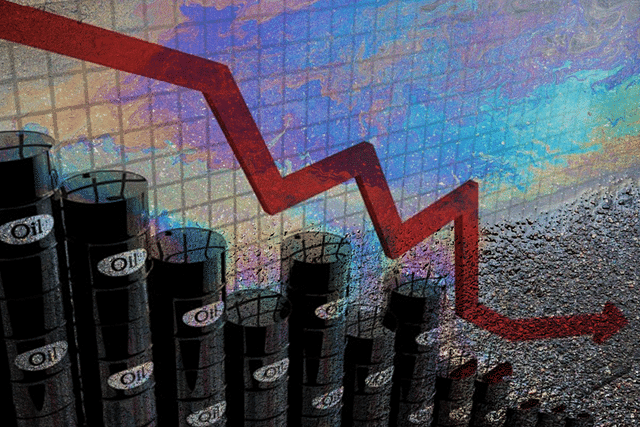
Brent Versus WTI Crude: Why Swinging Oil Prices Mean Nothing For Indian Consumers
Due to the extended lockdown in India, the overall oil demand has hit rock bottom. Unfortunately, while it could’ve been our golden business moment, our poor storage capacity does not allow us to profit from the currently low global prices.
Everyone is talking about the historic oil plunge, which happened way back in 1946. What we are referring to is this data point - On 20 April, West Texas Intermediate (WTI) May contract traded 306 per cent lower to settle at minus $37.63 a barrel.
The reason: Demand destruction as the US economy was under partial lockdown due to the pandemic. There is so much oil available and no space to store. So, supply glut has turned US crude oil futures in the negative region.
As against this, Brent crude, which is the international benchmark, was trading higher since more storage space is available across multiple locations, making deliveries easier. Brent was trading at $25.57 a barrel, a 9 per cent slide.
What is WTI and Brent
As a starting point, Brent crude price is the international benchmark price used by the Organisation of Petroleum Exporting Countries (OPEC), while WTI crude price is a benchmark for US oil prices.
According to Investopedia, Brent crude is extracted from the North Sea, WTI is usually extracted from US oil fields in Texas, Louisiana, and North Dakota.
WTI, has a lower sulphur content than Brent, Both oils are relatively light, but Brent has a slightly higher API (American Petroleum Institute) gravity, an indicator of the density of crude oil or refined products.
Brent Oil is more important for India
India’s crude oil import is primarily from OPEC countries, so Brent is the benchmark for oil prices in India.
Brent oil produced in Europe, Africa and the Middle East uses Brent crude as the basis of pricing.
The Brent futures are traded on the Intercontinental Exchange (ICE) in London, while WTI is traded on the New York Mercantile Exchange (NYMEX).
As Brent is produced near the sea, its cost of shipping is typically lower, since it can be shipped immediately. The shipping cost of WTI is higher since it is produced in landlocked areas of US like Cushing, Oklahoma, where the storage facilities are limited.
What does the oil plunge means to India
Due to the extended lockdown in India, the overall oil demand has plunged by over 50 per cent in the first week of April, with both petrol and diesel down by around 60 per cent, also with no domestic and international air travel, the ATF demand has also come down drastically by 90 per cent.
India has very low storage capacity called Strategic Petroleum Reserve (SPR) of 37 million barrels, which is equivalent to 13-16 days of usage at the present rate of consumption.
Also, China is slowly coming out of the industry shutdown due to coronavirus and almost 80 per cent of its factories have started cranking up. This will keep the pressure on the Brent oil price. India, which is the third largest oil consumer globally, also aims to partially open its industrial activity in the weeks to come, and this would mean that demand will not come down as it has happened for the US economy. Therefore, the downward pressure on WTI prices.
How much India will benefit due to low crude prices will all depend how fast the economy revives and demand ramps up.
In the short run, we may not gain much. However, if the oil prices stay subdued for a long time, then it is sure to favour us in a macro way by shoring up our Balance of Payments position.